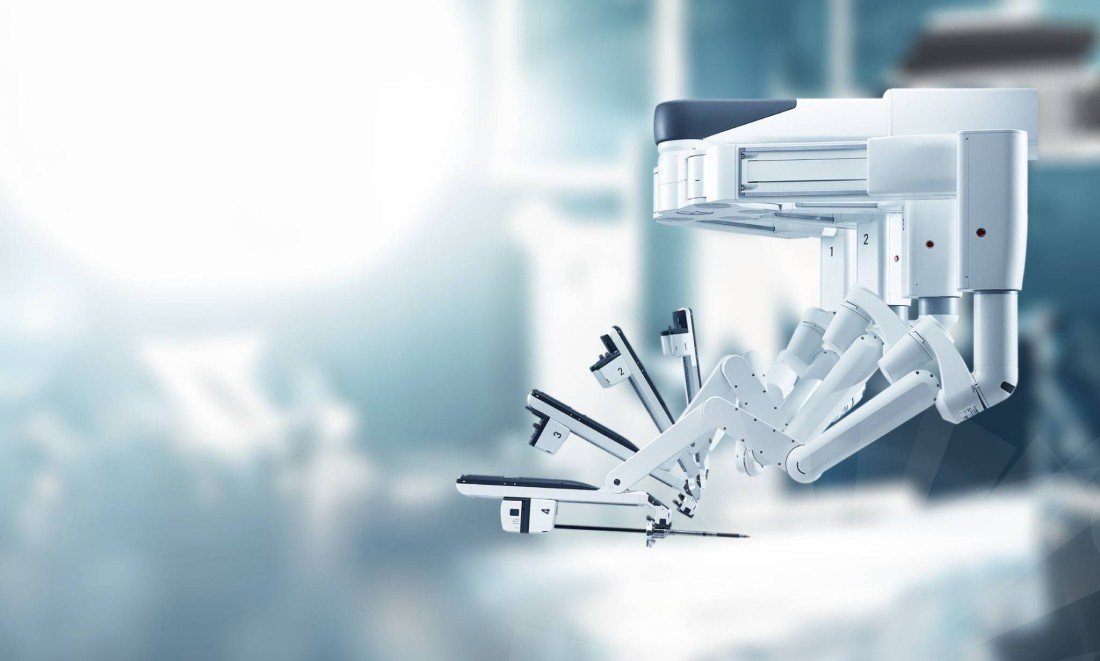- Robotic assisted Spinal Surgery
- Robotic assisted Total Knee Replacement
- Robotic assisted Urology Surgeries
- Robotic assisted ENT Surgeries
- Robotic assisted General Surgeries
ExcelsiusGPS® Robotic Navigation



ExcelsiusGPS® is designed to improve accuracy and optimize patient care by using robotics and navigation for spine surgery. It offers real-time tracking of instruments and implants, along with audible, visual and tactile feedback.
Special Features:
- Robotic guidance: The End Effector aligns the guide tube precisely along the desired trajectory, allowing for direct implant placement with GPS instruments.
- Navigation: The system provides real-time feedback on instrument positioning relative to the patient’s anatomy.
- Rigid robotic arm: The robotic arm’s rigidity ensures stability during implant insertion, even on step trajectories.
- Imaging compatibility: The system seamlessly integrates into the surgical workflow and supports planning and navigation in both 2D and 3D imaging modalities.
Advantages:
- Robotic guidance: The system can speed up the surgery procedure and enhance the precision.
- Navigation: This feature has the potential to significant reduce the amount of radiation required during the procedure.
- Rigid robotic arm: The system with high stability which enhances the accuracy and precision of the surgical procedure.
- Imaging compatibility: The system assists surgeon to have comprehensive understanding of the patient’s anatomy during the procedure. It enhances the accuracy of the surgery.
ROSA® Robotic System




The ROSA® Robotic System is an advanced system can be used to assist surgeons in orthopedic knee replacement surgery. The system offers assistance in bone resections and evaluating the condition of the soft tissues to optimize implant positioning during the surgery.
Special Features:
- Complete preoperative plan: The system utilizes 3D images of the knee joint to create a comprehensive preoperative plan.
- Safer surgical experience: The system can enables precise surgical resections with minimal errors.
- Robotic guidance: The system automatically corrects the displacement during the surgery, ensuring accurate implant placement.
Advantages:
- Complete preoperative plan: This not only assists surgeons visualize the procedure but also instills confidence in patients.
- Safer surgical experience: It reduces the risk of damage to cartilage, ligaments and other tissues. This precision contributes to a safer surgical experience for patients.
- Robotic guidance: Surgical time is significant reduced and the occurrence of complications is minimized. This ultimately leads to a higher success rate for knee replacement procedures.
Da Vinci Xi Robotic Surgical Systems



The Da Vinci Xi surgical system is renowned for its comprehensive integration of advanced da Vinci technology, offering expanded anatomical access and improved ease of use.
Special Features:
- Thinner and longer arms: The system’s thinner and longer arms facilitate simpler port placement, allowing for increased flexibility and adaptability from case to case.
- Integrated Table Motion: The Da Vinci Xi system incorporate Integrated Table Motion, enabling surgeons to reposition the patient during the procedure without interrupting the case
- Multiple perspectives: With the Da Vinci Xi system, a small scope can be placed on any of the four robotic arms during a procedure.
Advantages:
- Thinner and longer arms: This feature increases flexibility of arms to enhance the surgical team’s ability to access and navigate challenging anatomical structures.
- Integrated Table Motion: The system’s capability optimizes access, exposure and reach, enhancing the surgical outcomes.
- Multiple perspectives: This feature provides the surgical team with additional perspective and angles, enhancing visualization and precision during the surgery.





























